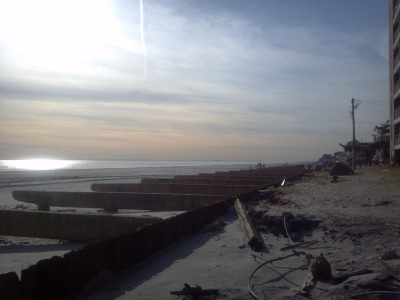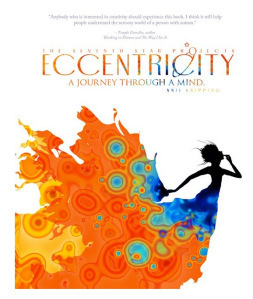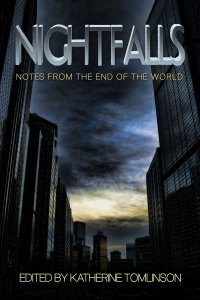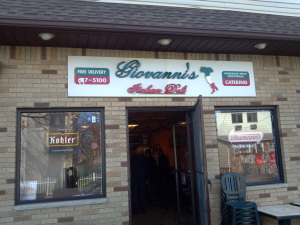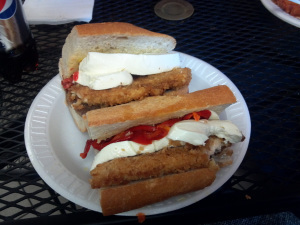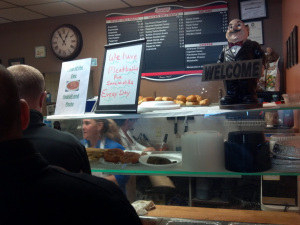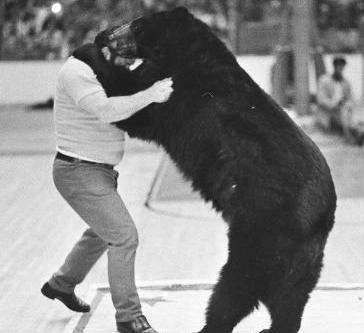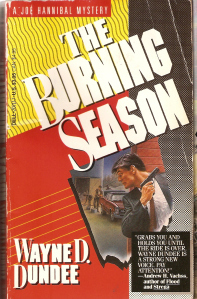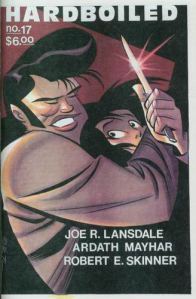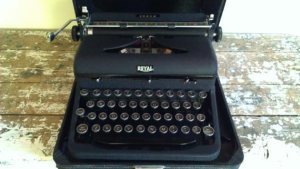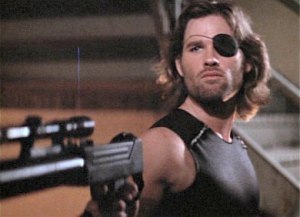Thomas Pluck's Blog, page 52
December 10, 2012
Fighting Sandy in the Rockaways
Chewin’ out a rhythm on my bubble gum
The sun is out and I want some
It’s not hard not far to reach
We can hitch a ride to Rockaway Beach
Up on the roof, out on the street
Down in the playground the hot concrete
Bus ride is too slow
They blast out the disco on the radio
Rock Rock Rockaway Beach
The Ramones sang its simple pleasures. The boardwalk is now at the bottom of the sea. The homes all along the thin witch-finger of the peninsula are soaked to eye level and silted with muck. Superstorm Sandy did a number on the Rockaways, and all the way down the Jersey coast. I volunteered with New York Cares to help homeowners with the demolition that comes before rebuilding can begin. It will take a long time and a lot of work.
My co-workers and I worked on three houses. We tore out sodden paneling in one, ripped up a ruined hardwood floor in another, and tore the moldy drywall out of an entire ground floor of the third. That’s the house I worked on. Out of respect for the owners, I took no photos of any homes we worked on. I flip 700lb truck tires for fun and wrestle maniacs on Saturday mornings when I could be watching cartoons. Let me say this: demolition is hard work. Smashing walls is fun. Shoveling hundreds of pounds of mushy sheet rock into trash bags and lugging them to the curb, not so much. But that is the job. You’re not there to have fun, you’re there to help people who have lost so much. The worst thing I saw was the door to a girl’s bedroom, polka-dotted with stickers, with nothing inside but sagging walls and sea wrack.
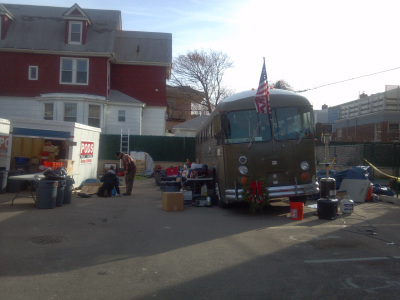
The forward operating base and the bus from Team Rubicon
The good folks of Team Rubicon, veterans who mobilize to assist with disaster relief, were the first on the scene. AmeriCorps and Conservation Corps took over, and New York Cares is mobilizing the employees of many companies who bus their workers to these sites to offer the manpower needed to make a dent in this enormous tragedy.
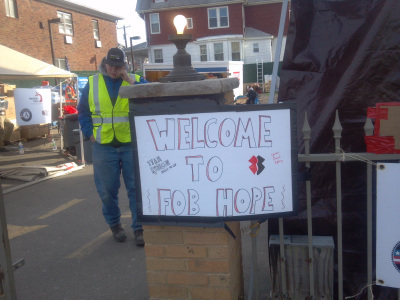
Fobbits unwelcome… get to work
I won’t call the scope mind-boggling. You can open Google Maps and trace from Connecticut down to Delaware to see where the storm’s fist landed. The damage is comparable to Katrina, but not the loss of lives. The east coasters were lucky. We had a bigger public transportation system, and many of the shore homes were owned by folks who could afford to leave. A thousand died in Katrina. Sandy killed over a hundred, counting the Caribbean islanders who died in its wake. And most of all, we had seen Katrina. We had not been teased with smaller hurricanes. Irene threw us for a loop, and when the NOAA said Sandy was her big bad sister with a razor in her shoe, we took notice. And she dragged her nails down the coastline and tore our sandcastles apart.
If you want to assist, I recommend you contact New York Cares and Jersey Cares to see what help is needed. If you don’t want to don Tyvek suits and masks to tear down moldy houses, you can help sort relief goods and equipment, or deliver meals to the elderly who were displaced by the storm, or help schools and kids in the areas.
And so castles made of sand fall in the sea, eventually…
Tagged: charity, Hurricane Sandy, Jersey Cares, New Jersey, New York Cares, New York City, Ramones, Rockaway Beach, Volunteering



December 7, 2012
Fresh Kill: the burger at Les Halles downtown
Les Halles, Anthony Bourdain’s downtown brasserie, makes one of my favorite cheeseburgers: ground to order with chopped sirloin, perfectly cooked with a good sear, served alongside some of the best fries in the city. I’ve had the burger at their Park Ave. location and I prefer the John Street joint, in the Financial district. They also serve good beer, from Allagash White to Kronenbourg 1664. Not a fantastic selection, but good. The Brooklyn Winter Lager was my favorite on tap.
Their burger is good because it is simple. A solid sesame bun, some caramelized onions, tomato. And good beef. Nothing crazy fancy, no claims of “single steer” or other nonsense. They grind it from the sirloin trimmings of their many tasty steaks. This time around it felt a tiny bit smaller and a little less fatty. I suppose it depends on what they have. But it is still one of the best burgers in the City. It’s not cheap, but not ridiculous. For great cheap burgers, there’s HB Burger, Shake Shack (AVOID the awful Times Square one), and the Burger Joint at the Parker Meridien (behind the curtain). Those are around seven bucks and really damn good.
The best, I am told, is at the Minetta Tavern. We have yet to try it. It is $26 for the top end burger. The burgers at DBGB, the beer & banger joint, are half that and are fantastic, one of the best. So is the roquefort burger at Spotted Pig. So it’s tough to go pay that much for a burger, even as a treat. How great could it be? If it is as disappointing as the “single steer” burger at Pig & Prince in Montclair- I’d rather have a $7 burger from Krug’s Tavern- then it’s money down the drain. But I will try it eventually, and report back to you. My standard is still the Cloverleaf Tavern. They make a consistently good burger, if you get it medium to medium rare. Sometimes the kitchen overcooks them, but when they get it right they are one of the best around, especially for the price.
Tagged: Anthony Bourdain, Back in the New York Groove, Burgers, Food, Fresh Kill, Greasy Spoons, Les Halles, New York City



December 6, 2012
Belly Up to the Bar with Katherine Tomlinson
Katherine Tomlinson is the author of six books of crime, urban fantasy and dark fiction. She has written for feature film and television, and for newspapers and magazines across the country. Her work has appeared in A Twist of Noir, Pulp Ink 2, and Weird Noir. She is also the editor of the upcoming Dark Valentine Press anthology Nightfalls: Notes from the End of the World which includes stories by Nigel Bird, Patricia Abbott, Jimmy Callaway, Richard Godwin, and yours truly.
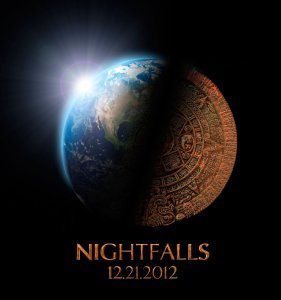
 TP: Welcome to Belly up to the bar, Katherine- what are you drinking?
TP: Welcome to Belly up to the bar, Katherine- what are you drinking?
KT: Would you mock me if I ordered a virgin Sea Breeze? I’m diabetic so I save my calories for things that are really important, like the occasional fleur de sel salt caramel (thank you Trader Joe’s for making them available year ’round) and spicy Thai drunken noodles with chicken. I am all about the spice.
TP: Not one bit! I do partake of nonalcoholic beverages, they are one of my many vices. You write dark fiction. The first story of yours for me was “Water Sports” in A Twist of Noir (not what it sounds like, pervos) which perfectly captures the voice of a psychopath. Where does that voice come from? Is there a place that you go, or a memory you conjure?
KT: I have no idea. Compared to so many people I know, I won the parent lottery. I was loved, encouraged, praised, and given access to books and art and music (we had a piano) and travel. I tend to be a pretty positive person (I wear pink! I have a cat!) and I often wonder if it’s because I write out all my anger in short stories. And really, my fiction is only darkish compared to something like Plastic Soldiers by W.D. County or your own Black-Eyed Susan (which I admired very much.)
TP: One of my favorite movies is Last Night, a Canadian film about the last day on Earth, and how people spend it. It is surprisingly mundane, but very thought-provoking. What inspired the theme of the Nightfalls anthology, the end of the world?
KT: I don’t know that movie. I’ll have to check it out.
One of my good friends and I had thought about doing an end of the world webseries that would climax on 12.21.12. The idea was to follow a lot of stories, a la Crash or Valentine’s Day–all of them tied together by the office building where the characters worked. That project didn’t come to fruition but the idea wouldn’t leave me alone. I ended up playing around with a story I called “Conor and Travis Salute the Fallen Warriors” about a couple of World of Warcraft players who stay connected to the bitter end. It still needs some work, so I didn’t put it in the anthology.
TP: That sounds like a great concept, really. I was briefly addicted to MMPORGs, and find the so close, yet so far dichotomy lends itself to a good story. (For the record, I sold my account and helped pay for my sister’s wedding.) The introduction you wrote for the anthology moved me. People seem to wander around in their own little worlds these days, and believe that only their pain matters, and everyone else’s is somehow their own fault. Do you think people have become more and more selfish, or that we’re just more aware of it?
KT: In One Day in the Life of Ivan Denisovich, Aleksander Solzhenitsyn wrote, “When you’re cold, don’t expect sympathy from someone who’s warm.” I think that during the run-up to this year’s presidential election, the lines being drawn between those who are warm and those who are cold was pretty stark. It was all very Gilded Age and “I’ve got mine.” And it was troubling. I was especially troubled by some of the new euphemisms–talking about “hunger” as “food insecurity.” Food insecurity. My aunt is a retired Methodist minister and one of her longtime outreach programs is a food bank that serves a pocket of semi-rural Southwest Virginia. She’s feeding hungry people, not people who think they’re going to gain weight if they eat a whole non-fat muffin.
I think the proportion of selfish and clueless people is about the same as it’s always been–we just hear about it more now. What is that line from A Christmas Carol when Scrooge is asked to donate to the poor–”Are there no workhouses? Are there no prisons?” That was written in 1843, almost 170 years ago and every time I heard a reference to the “47 percent” last fall, I thought about Dickens.
TP: It’s refreshing to hear you speak of it as bluntly as I see it. Money forgives everything in America- it is very Machiavellian. And compassion is seen as denying some Darwinian imperative, by people who don’t believe in evolution. It’s utterly bizarre. From your bio, you’ve traveled the country from Hawaii to the coasts. I tend to be fascinated about the little pockets of character all over the country. What are some of your favorite places?
KT: I like cities on the water, oceans, lakes, rivers. I love San Antonio and am seriously considering moving there at some unspecified future date. I miss my hometown (Washington D.C.) terribly and when I was back there this summer, I was reminded anew of how much I love that city. It’s so green. My neighborhood in Los Angeles is a little oasis of trees and flowering Japanese magnolia and jacarandas in the spring, but L.A. was carved out of a desert thanks to water stolen from the Colorado River, and the desert is just waiting to take it back.
I love New Orleans too, that glorious wrecked wedding cake of a city. (I love that if you ask cab drivers where to find the best bread pudding in the city, they know. They talk about food there like people in L.A. talk about celebrities.)
I’ve never been to Portland, Oregon but have fallen in love with the city from watching Grimm. (Yes, like those who buy Playboy for the articles, I watch Grimm for the scenery. It has nothing to do with Sasha Roiz. Really.) I also have a soft spot for Ocracoke Island in North Carolina. You want characters? There are some serious characters on Ocracoke.
TP: I love New Orleans, myself. Its old history as a free city lives on. And DC, the cherry blossoms and the worldliness. Writers always talk about their favorite writers, but I think there so many other influences on writing. For me, movies and music were a big part of it, the dark fatalistic tone of the nuclear age, and the raw, outlaw ferocity of early rock ‘n roll. You’re welcome to mention the writers you admire, but what else has inspired your writing?
KT: The Washington Post. (Most people don’t know this but until 1981, DC also had an afternoon paper, the Evening Star, and it was a damn fine publication.) So I grew up reading two local papers a day. My father subscribed to both the Wall Street Journal and the Christian Science Monitor. My parents were news junkies who would have loved the world of 24/7 news cycles. All that news just sort of acted as fertilizer for my imagination. I was a journalist for 15 years before I turned to fiction and I loved that I was paid to ask questions; that I could be nosy for a living.
I write a lot of fiction based on random news. (And I owe a lot to the Drudge Report, which is a never-ending source of inspiration.) But even the regular news these days is weird: Disembodied feet washing up in Toronto, bodies piling up in Detroit morgues. Tsunami debris coming in with the tide. Dolphins being murdered. Choking to death on roaches. The stories practically write themselves.
I was also a crazy fan of Twilight Zone and I think it shows in my stories, I do love my twist endings and I blame that on Rod Serling. At Thanksgiving this year we had the annual TZ marathon on in the background and everybody at the table could mouth the dialogue along with the characters … for every episode. Yes, everyone I know is a geek. One of my favorite writers is Stephen King and you can tell he grew up watching those same episodes.
TP: Oh yes, Twilight Zone and Tales from the Crypt. That sense of fate inspired “Black-Eyed Susan,” which may be why you liked it. Thank you, by the way. For me the weird news source is Weird NJ magazine, I’ve written for them and I love exploring all sorts of forgotten history. You write a lot about fear, and it is the most visceral of emotions. As an adult, I find it tougher to get scared for entertainment. I loved supernatural horror, but aliens and werewolves aren’t scary for me anymore–the fear of losing loved ones to disease and accidents is all that remains–and that is too painful to read, sometimes. What is your favorite fear to explore in your writing?
KT: As a movie-goer, I am a horror movie maker’s dream audience. All you have to do to scare me is have something jump out at me. I still remember the jolt when I saw Jaws for the first time and nearly swallowed my popcorn because the editing and the music conspired to trick me into relaxing just before the shark popped out of that hole. (And for the record, I have been nervous about swimming in the ocean ever since.)
I think my stories are fed from a wellspring of anxieties that aren’t entirely my own. I’m afraid of heights but not of snakes. Around my house I am spider-bane, the designated killer of all things eight-legged and yet I have a totally irrational fear of going to bed with the Christmas tree lights burning. The most successful woman I know is haunted by a fear of being homeless. I once saw a neighbor totally freak out when a kitten licked her toe. “Get it away from me,” she shrieked, scaring the kitten.
If I had to narrow it down, I’d say I write a lot about loss. The death of my younger sister five years ago remains a tender spot and I have returned to that grief a number of times in stories. I don’t want to exploit that though, because that gets boring and kind of sleazy.
TP: My condolences, Katherine. Loss is the one real fear, for me. Men are told to be protectors, and we often base our self-worth upon it, in part, so loss of a family member—especially a female one—chills us to the core. And there’s all sorts of guilty emotions caught up in it, because it’s rather sexist, and possessive, isn’t it? Thank you for your honesty, not everyone likes talking about fear. So, other than Nightfalls, what is your latest book, and what do you have coming down the road for us to look out for?
KT: I am finishing up my first novel, Begotten, which is best described as urban fantasy, although I am beginning to hate that genre tag because so many books in that niche are same-old, same-old. My heroine is a crime reporter who follows paranormal crime. Unlike Carl Kolchak (Kolchak the Nightstalker was another big inspiration for my writing), she exists in a world that knows about supernatural creatures, so paranormal crime is just a regular journalism beat like reporting on City Hall or writing about high school sports.
The book takes place in the paranormal Los Angeles of my L.A. Nocturne stories (shameless plug), and I find it way too easy to slip into that world. Going from short stories to a novel, though, has been hard work. Novelists Christine Pope and G. Wells Taylor have been pushing and prodding me through the process, though, and I owe them a lot for their support.
TP: I’m looking forward to it. Stephen Blackmoore’s City of the Lost was a surprise favorite for me, and he made the Kirkus top 100 with it. I hope yours is there next year. Thank you for giving us a lot to think about, Katherine. One last question—what would your last meal be?
KT: A rare steak. Ripe tomatoes from my great-uncle’s garden. Garlic mashed potatoes. Or macaroni and cheese. Green beans with bacon and crushed red pepper flakes. Bread pudding from Commander’s Palace in New Orleans or Ina Garten’s chocolate cake with a side of caramel ice cream made from my great-grandmother Julia’s recipe. Or maybe all three if I still have room.
TP: That sounds delicious. Makes me want to fire up the electric chair, but then I’d never get to read Begotten. Thank you for dropping by, and for a great conversation.
You can read more of Katherine’s work at her blog Katomic Energy and her list of books is on her website.



December 5, 2012
Eccentricity: A Journey Through a Mind
It takes a brave person to bare all; we all wear layers of masks, and some people you never truly know. This is a glimpse into the mind of an artist with autism and synesthesia, and explains how she sees the world through frank writing and beautiful paintings and digital art. It explores what outsiders in our culture do to survive, how we learn to interact with people who tilt their heads and consider us as one might a strange dog.
Anie Knipping is my neighbor, and it took some time before we said more than the nervous hellos that pass for conversation in an apartment complex. I wore my Venture Bros. Order of the Triad t-shirt while doing laundry, she recognized it, and two pilgrims from the nerdworld began speaking their common tongue. I had known she was an artist, and that she led community projects such as the local garden for seniors in our building, but hadn’t struck up a conversation or seen her work before. I was very pleasantly surprised, and I’m glad she reached out.Despite the “Tommy Salami” web presence and boisterous demeanor, I am an extremely shy person who does not make friends easily.
So I found much of this book refreshingly familiar. She goes into detail about how she used online social games to adjust to society, and explore what selves she wanted to share. The art is truly gorgeous and unique, from the synesthesia overlays that mimic how she experiences the world, to the volcanic fantasy dreamworlds she puts to canvas from her imagination. It is not so much indulgent as deeply detailed, and I was delighted to learn that the book is used to help children with autistic spectrum disorders to understand that they are not alone in experiencing reality differently than the norm. Reading this will peel away the calluses you’ve formed that deaden your feelings to the wonderful and bizarre world we live in. You’ll understand what it is like to navigate the loud, bright and rambunctious world with a surplus of empathy, what it is like to be born at age 13, and how to taste the weather and see music.
Full color textbook-sized paperback
Tagged: Anie Knipping, Art, Asperger's, Autism, Books, Eccentricity, Nerds, Synesthesia



December 4, 2012
My Life with the Thrill Kill Kult
The song stuck in my head this week is… Shock of Point 6, by TKK:
Bow down and worship me, and I’ll give you everything the eye can see…
My Life with the Thrill Kill Kult is an industrial band I first listened to in the early ’90s, and their sounds still resonate strongly with me. They have a grindhouse, sleazy pulp sensibility, and many of their song and album titles come from pulp novels (A Daisy Chain for Satan, by Joan Fleming is one) and they seem to spring from an alternative universe where the Satanism panic of the late ’70s never ended, and Hollywood Babylon is a neverending party behind a secret door.
Sex on Wheelz is their biggest hit, and with its blaring sexy sax it feels like it was written for a nonexistent Russ Meyer film of the same title. Though they have done lighter and trippier fare, including their Hit & Run Holiday album which has more of a surf edge. They aren’t for everyone, and do sound a bit like club dance music, but the trashy lyrics and tone are clear.
Devil Bunnies was my first introduction to their music, off of Kooler Than Jesus, a CD that collected their first extended singles. I’m a sucker for a good title, and their albums include the great ones Confessions of a Knife and I See Good Spirits and I See Bad Spirits, both of which I would gladly steal for book titles if I weren’t afraid an actual Kill Kult would sever my johnson and feed it to a devil goat, or worse, a devil bunny.
I saw them play at Prince’s club in Minneapolis- The Quest? I can’t remember the name. It’s a good venue, we always grabbed a good balcony spot near the bar. They put on an amazing show, tons of energy and showmanship. They were touring their album A Crime for All Seasons, which has a bit of a sleazy noir edge to it with songs like “Mr. and Mrs. Bottomless Pit.” That’s another thing I liked, they went with a mild theme for each album and changed just a little bit to keep it interesting, while remaining true to their origin.
Tagged: My Life with the Thrill Kill Kult, Song in my Head This Week



December 3, 2012
Top 5 at Luca Veste’s place
I’m over at Luca Veste’s blog today, with my picks for my top 5 reads of the year.
I didn’t read as many books as I’d hoped this year.



December 1, 2012
Acapulcolypse, and more in NIGHTFALLS: Notes from the End of the World
Katherine Tomlinson’s new anthology, NIGHTFALLS: Notes from the End of the World is now available from Dark Valentine Press. It includes my story “ACAPULCOLYPSE,” about a nebbish mass murderer with biological weapons on a cruise ship set to view the world’s final solar eclipse. It’s a comedy.
plus stories of armageddon from Patti Nase Abbott, Nigel Bird, Col Bury, Chris Rhatigan, Matthew C Funk, Richard Godwin, Sandra Seamans, Veronica Marie Lewis-Shaw, AJ Hayes, Allan Leverone, Jimmy Callaway and more.
If you read it before 12/21/12, you can say “I’ve got Mayan, where’s yours?” and be all smug before the sky bursts into flame.
Tagged: AJ Hayes, Allan Leverone, Col Bury, Horror, Jimmy Callaway, Katherine Tomlinson, Matthew Funk, Nigel Bird, Nightfalls, Patti Abbott, Richard Godwin, Sandra Seamans, Science Fiction, Veronica Marie-Lewis Shaw



November 30, 2012
Fresh Kill: Giovanni’s Deli
Welcome to Fresh Kill, the latest feature of the blog, where I will document in detail the many burgers, pizzas and sandwiches that caveman Tommy takes down on the wild Veldt.
Giovanni’s is a small Italian delicatessen snugged between the cozy houses of a quiet neighborhood in Secaucus, New Jersey. The amusing name means “black place of snakes” in Algonquin, and it was once known for its effusive odor, due to both its proximity to the Meadowlands swamp, and the pig farms, rendering plants, and junkyards that once populated the town. The pigs and their stink are long gone, and the only snakes are the convoluted streets and highways that clog the area, like the roots of an ambitious houseplant outgrowing its meager pot.
Giovanni’s has the usual cold cuts, from Kohler ham to prosciutto and capicola (gabbagool, in the common parlance). But the real draw is the hot cooked foods, with daily specials. They make their own fresh mozzarella, and it is some of the best I’ve tasted. It was still warm and creamy, and they do not skimp.
I ordered a breaded chicken cutlet on a hard roll with mozzarella, hot peppers, and balsamic vinegar. The chicken was crisp and tender inside, full of flavor. The mozzarella was creamy with the subtly tart milk taste of the best fresh stuff, comparable to the mozzarella di bufala I had in Napoli. The peppers were not very hot, but did have good flavor, and the sweet vinegar gave it all a little zing. An excellent sandwich, enough for two meals, which I ate one after the other.
My compatriots had meatballs in sauce and chicken parmigiana, and raved about both. They also sell soups and Italian snacks, they make their own pasta salads, and they offered rigatoni in meat sauce and eggplant rollatini as the specials. They have a few tables and chairs inside and out, but expect to wait. The lunch line was not long at all, and well worth it.
So what’s the verdict? Was this wildebeest worth taking down? This carnivorous caveman was perfectly sated. The mozzarella is the shining star, so do not neglect it on any sangweech (sandwich, in English) you get here. I would gladly return.
Tagged: Deli, Food, Fresh Kill, Giovanni's Deli, Greasy Spoons, Italian, Sangweech



November 29, 2012
Belly Up to the Bar with Wayne Dundee
Wayne D. Dundee is the author of the Joe Hannibal P.I. novels, a number of westerns, and founded Hardboiled Magazine. He wrote the original western “Adeline” for the Protectors anthology, a horror novel called Night Spoor, a Cash Laramie novella for Beat to a Pulp, a novella in the Fight Card series, and most recently released a collection of Joe Hannibal short stories for Kindle. That was my introduction to Wayne; we both appeared in David Cranmer’s Beat to a Pulp: Hardboiled collection, and his story blew me away. He imbued a tired hit man with real humanity. Not a character you’d want to meet, but a human being nonetheless, not the stock heartless killer we often get. I’ve read a lot of Wayne’s stories since, and that’s what stands out- once you settle into his comfortable storytelling manner, he introduces you to characters heart and soul, whether they be the good guys or the bad guys. A villain might be a no-good SOB, but you’ll understand him as you cheer for his demise.
 TP: Wayne, welcome to Belly Up to the Bar. What’ll you have?
TP: Wayne, welcome to Belly Up to the Bar. What’ll you have?
 WD: My serious beer-drinking days are behind me. Back in the day, I paid for A LOT of the hay that went into the feed bunks of those Budweiser Clydesdales … These days, most mornings start with a couple mega-cups of Folger’s Black Silk coffee blend; then, through the balance of the day, it’s copious amounts of an ice tea/lemonade mixture, sometimes a Diet Coke in the afternoon if I need a caffeine boost … For a special occasion such as this visit to the Belly Up to the Bar, however, I’ll have an ice cold bottle of Miller Chill or maybe a vodka gimlet.
WD: My serious beer-drinking days are behind me. Back in the day, I paid for A LOT of the hay that went into the feed bunks of those Budweiser Clydesdales … These days, most mornings start with a couple mega-cups of Folger’s Black Silk coffee blend; then, through the balance of the day, it’s copious amounts of an ice tea/lemonade mixture, sometimes a Diet Coke in the afternoon if I need a caffeine boost … For a special occasion such as this visit to the Belly Up to the Bar, however, I’ll have an ice cold bottle of Miller Chill or maybe a vodka gimlet.
 TP: You have the voice of a natural storyteller. I was writing flash fiction when we first met, and reading your stories showed me it was okay to relax and let the voice do the talking. You also have a knack for choosing stunning locales, as in Reckoning at Rainrock. The land is its own character. Does that come from living in your part of the west?
TP: You have the voice of a natural storyteller. I was writing flash fiction when we first met, and reading your stories showed me it was okay to relax and let the voice do the talking. You also have a knack for choosing stunning locales, as in Reckoning at Rainrock. The land is its own character. Does that come from living in your part of the west?
 WD: Yes, very much so. Out here—in west central Nebraska and bordering states to the west—people are very aware of the land. They recognize they are OF the land, whereas to the east and in most urban areas it’s more a case of people thinking of themselves as simply being ON the land … In my writing, I’ve always used “the elements”, if you will, to help anchor my story, set my moods. For my Joe Hannibal stories when he was still operating out of Rockford, Illinois, I used weather, etc. But even then, for rural settings, I took extra time to paint the scene. I was raised on a series of farms (changing jobs and moving was my old man’s hobby) so deep down I’m just a big ol’ plodding farmboy who’s always felt more comfortable in rural/small town settings. Hence, when I write about them I do so from a more comfortable and self-assured standpoint … And for my Westerns, like RECKONING AT RAINROCK, an appreciation for the land is essential … If you respect the land and write about it from the heart, it DOES become a character.
WD: Yes, very much so. Out here—in west central Nebraska and bordering states to the west—people are very aware of the land. They recognize they are OF the land, whereas to the east and in most urban areas it’s more a case of people thinking of themselves as simply being ON the land … In my writing, I’ve always used “the elements”, if you will, to help anchor my story, set my moods. For my Joe Hannibal stories when he was still operating out of Rockford, Illinois, I used weather, etc. But even then, for rural settings, I took extra time to paint the scene. I was raised on a series of farms (changing jobs and moving was my old man’s hobby) so deep down I’m just a big ol’ plodding farmboy who’s always felt more comfortable in rural/small town settings. Hence, when I write about them I do so from a more comfortable and self-assured standpoint … And for my Westerns, like RECKONING AT RAINROCK, an appreciation for the land is essential … If you respect the land and write about it from the heart, it DOES become a character.
 TP: I already mentioned how strong your characters are, but you’re pretty strong yourself. I seem to recall you telling how you wrestled a bear, back in the day. I won’t ask you to tell the whole story, but what made you get in the ring with a five hundred pound killing machine?
TP: I already mentioned how strong your characters are, but you’re pretty strong yourself. I seem to recall you telling how you wrestled a bear, back in the day. I won’t ask you to tell the whole story, but what made you get in the ring with a five hundred pound killing machine?
 WD: Classic case of open mouth, insert foot … I wasn’t yet 30, had just made 2nd Shift foreman at the factory where I worked. I was 6’1″, about 265, in pretty good “big guy” shape and had a reputation of sorts around the shop for the strength I displayed during the course of doing my production work before going into management. At a large nearby shopping mall they were featuring, as an advertising gimmick for some event, Tuffy Truesdale and Victor “the wrestling bear”, who had been featured as part of AWA pro wrestling shows around the Midwest. Tuffy and Victor were at the mall over a three-day weekend putting on three shows a day, part of which included challenging guys to come out of the audience and wrestle Victor. One night at work, I made the comment that it might be fun to go accept that challenge for the sake of having something to tell the grandkids — BOOM! just like that I was locked into following through …
WD: Classic case of open mouth, insert foot … I wasn’t yet 30, had just made 2nd Shift foreman at the factory where I worked. I was 6’1″, about 265, in pretty good “big guy” shape and had a reputation of sorts around the shop for the strength I displayed during the course of doing my production work before going into management. At a large nearby shopping mall they were featuring, as an advertising gimmick for some event, Tuffy Truesdale and Victor “the wrestling bear”, who had been featured as part of AWA pro wrestling shows around the Midwest. Tuffy and Victor were at the mall over a three-day weekend putting on three shows a day, part of which included challenging guys to come out of the audience and wrestle Victor. One night at work, I made the comment that it might be fun to go accept that challenge for the sake of having something to tell the grandkids — BOOM! just like that I was locked into following through …
So on a Sunday afternoon a week or so later, there I was in front of about 500 people mixing it up with Victor in the center court of the Cherryvale Mall. I had a plan going in, having gone and watched him the day before. But considering that Victor (who was advertised as standing 7 feet tall and weighing more like 700 pounds, by the way) had wrestled about a gazillion other guys in his career, he’d seen about everything anybody could think of and my plan didn’t amount to spit. We danced around a little, tugged and pushed on each other a little, he knocked me on my ass two or three times, and finally I was too out of gas to get back up. I lasted a little under two minutes, it felt more like two hours. He ended up laying on top of me, licking the sweat off my face. I think he liked me — Luckily not in a romantic way, because I don’t know if I could have found a second wind to fight him off.
 TP: Tell us about Joe Hannibal. You have a new novel coming out, and you just released a collection of his short stories. What were his beginnings, where is he now, and what makes you return to him as a character?
TP: Tell us about Joe Hannibal. You have a new novel coming out, and you just released a collection of his short stories. What were his beginnings, where is he now, and what makes you return to him as a character?
 WD: Joe Hannibal made his debut in the Fall 1982 issue of Spiderweb Magazine, making this his 30th year in print and marking the Hannibal stories and books as one of the longest-running, still-active PI series on the scene. We’ve always enjoyed good reviews (when we got any at all) but sales have never been strong. We’ve been nominated for an Edgar, an Anthony, and six Shamus Awards; never won diddly but, like they say, it’s an honor to be in the running … I wrote the first Hannibal story (“The Fancy Case”, reprinted for the first time in the just-released short story collection BODY COUNT: The Joe Hannibal Case Files, Volume I) while I was recovering from kidney stone surgery. That was back in the pre-lithotrypsy days when they cut you damn near in half to get at the pesky damn pebbles. It was the first story I was ever satisfied enough with to submit and I had the unique experience of having it accepted first time out of the chute … I always knew I wanted to write a hardboiled “tough guy” series in the fashion of my personal Holy Trinity of fiction: Mickey Spillane (Mike Hammer), John D. MacDonald (Travis McGee), and Donald Hamilton (Matt Helm). During the years I tinkered with creating my own character, Joe had many different names and many different backgrounds. I finally settled on Joe (good old basic American name) Hannibal (powerful like the Carthagean general who invaded Rome, and at the same time American folksy like Mark Twain’s hometown on the Mississippi River). And he’d be a private eye, albeit with the distinction of operating out of my own small city of Rockford, Illinois … In the beginning, other than the setting, Joe was pretty much just another sock-and-shoot Mike Hammer wanna-be. It didn’t take long, though, before I started putting my own stamp on him.
WD: Joe Hannibal made his debut in the Fall 1982 issue of Spiderweb Magazine, making this his 30th year in print and marking the Hannibal stories and books as one of the longest-running, still-active PI series on the scene. We’ve always enjoyed good reviews (when we got any at all) but sales have never been strong. We’ve been nominated for an Edgar, an Anthony, and six Shamus Awards; never won diddly but, like they say, it’s an honor to be in the running … I wrote the first Hannibal story (“The Fancy Case”, reprinted for the first time in the just-released short story collection BODY COUNT: The Joe Hannibal Case Files, Volume I) while I was recovering from kidney stone surgery. That was back in the pre-lithotrypsy days when they cut you damn near in half to get at the pesky damn pebbles. It was the first story I was ever satisfied enough with to submit and I had the unique experience of having it accepted first time out of the chute … I always knew I wanted to write a hardboiled “tough guy” series in the fashion of my personal Holy Trinity of fiction: Mickey Spillane (Mike Hammer), John D. MacDonald (Travis McGee), and Donald Hamilton (Matt Helm). During the years I tinkered with creating my own character, Joe had many different names and many different backgrounds. I finally settled on Joe (good old basic American name) Hannibal (powerful like the Carthagean general who invaded Rome, and at the same time American folksy like Mark Twain’s hometown on the Mississippi River). And he’d be a private eye, albeit with the distinction of operating out of my own small city of Rockford, Illinois … In the beginning, other than the setting, Joe was pretty much just another sock-and-shoot Mike Hammer wanna-be. It didn’t take long, though, before I started putting my own stamp on him.
I mellowed him somewhat, grounded him with a blue collar farm kid background, and made use of the smaller city setting as far as plot lines and characters (very few stereotypical thugs and gangsters, for instance). This especially evolved when I started doing novel-length work … I also began (subconsciously at first) to invest a lot of myself into Hannibal. His tastes in food, personal biases, his actions based on the way I think *I* would act if caught in some of his situations, etc. Of course Joe gets shot at a lot and conked over the head now and then (neither of which I have experience in, and don’t necessarily want any) but he also runs across lots of hot dames (which I would be willing to endure, although at my creaky old age they’d probably kill me). In more recent years, the similarities between Joe and me have been more purposeful on my part. My draft number never came up, so I never served in the Army (Vietnam era). Therefore I never made that part of Joe’s background either, even though this was practically a prerequisite for protagonists of his ilk. Since I write Hannibal in the first person, I couldn’t bring myself to try and convey any associated feelings since I had never experienced anything close. Another example, since I suffer from bum knees as a result of age and abuse in my younger days, is inflicting Joe with a bum hip as a result of getting caught on the periphery of an explosion — much more dramatic circumstances on his part, but nevertheless in keeping with my desire to keep his capabilities somewhat close to mine … Perhaps the biggest move to keep us linked, was to bring Hannibal out here to Nebraska with me. And that brings us up to date. Joe ostensibly runs a private secure patrol serving homes and businesses around popular Lake McConaughy. He carries a Nebraska PI license mostly out of habit and to add credibility to his business, yet he doesn’t actively solicit investigative work any longer. Still, being who he is, trouble seems to seek him out and can’t resist getting involved … As far as why I keep returning to Hannibal as a character? Hell, that’s simple: I like the guy. A partnership like ours wouldn’t have lasted 30 if otherwise. From a more practical standpoint, you might say I’ve got too much invested in Joe to back out now. We’ve got more work to do, and I’m the guy who always says “persevere”, remember? … A writer pal who has his own series character once asked me if I ever had trouble coming up with stories in which to use Hannibal. My answer? “No, I have trouble coming up with stories that *don’t* have Hannibal in them.”
 TP: What inspired you to found Hardboiled Magazine? I was just a teen back then, but I remember noir and hardboiled being kind of forgotten in the culture, and spoofed at the time. Now it’s back with a vengeance, and you had no small part in its resurgence.
TP: What inspired you to found Hardboiled Magazine? I was just a teen back then, but I remember noir and hardboiled being kind of forgotten in the culture, and spoofed at the time. Now it’s back with a vengeance, and you had no small part in its resurgence.
 WD: After selling that first story on the first try, I proceeded to run into a wall and started getting stories rejected so fast the envelopes came back with skid marks on them. Spiderweb, where “The Fancy Case” appeared, had ceased publication. The rest of the market was pretty limited and what was out there didn’t seem to be interested in my stuff. Generally speaking, they weren’t interested in harder-edged stories—the kind I liked to write—at all. In talking with some other, more established writers I had gotten to know, I learned that even they were having trouble placing harder, tougher stories. I’d had some exposure to small press publications on various subject matter. Many of these were little more than typed, photocopied, stapled pages (all of this was before the internet or blogs or e-zines, remember) yet some of them drew quite a respectable following. It occurred to me: Why not a small press publication offering a showcase to the kind of fiction (also some reviews and other features) that there was limited outlet for? After contacting some of those same peers who shared my lament for lack of same and getting their verbal agreement that they would support such an undertaking with both subscriptions and stories, I decided I would start my own publication.
WD: After selling that first story on the first try, I proceeded to run into a wall and started getting stories rejected so fast the envelopes came back with skid marks on them. Spiderweb, where “The Fancy Case” appeared, had ceased publication. The rest of the market was pretty limited and what was out there didn’t seem to be interested in my stuff. Generally speaking, they weren’t interested in harder-edged stories—the kind I liked to write—at all. In talking with some other, more established writers I had gotten to know, I learned that even they were having trouble placing harder, tougher stories. I’d had some exposure to small press publications on various subject matter. Many of these were little more than typed, photocopied, stapled pages (all of this was before the internet or blogs or e-zines, remember) yet some of them drew quite a respectable following. It occurred to me: Why not a small press publication offering a showcase to the kind of fiction (also some reviews and other features) that there was limited outlet for? After contacting some of those same peers who shared my lament for lack of same and getting their verbal agreement that they would support such an undertaking with both subscriptions and stories, I decided I would start my own publication.
Hardboiled was born in the summer of 1985. We paid a penny a word on publication. Todd Moore, a local high school teacher I had gotten to know who was an “outlaw poet” and also a writer of Jim Thompson-style prose, agreed to assist me. He did story editing, wrote features and reviews, helped with collating; I shared in editing chores, did the layout and typing (yes *typing*, not PC or word processor, and even a MANUAL TYPEWRITER at first – I didn’t upgrade to an electric typewriter until the third or fourth issue). I even did most of the illustrations for the early issues … I was totally up front right from the get-go: Hardboiled was a paying market for all writers and it was also a showcase for my own material and a way to get my name out in front of people … We did twelve issues before handing HB over to Gary Lovisi, who continues to put out the magazine yet today. We featured well-known and also new writers, many of whom went on to bigger things, and whose names you would easily recognize. I’m proud of every issue we put out. Hardboiled did everything it was meant to do — except make money. And, really, that was never a big part of the goal anyway.
 TP: When did you begin to write, and what inspired you to start the hard work of coming up with stories and putting them on the page?
TP: When did you begin to write, and what inspired you to start the hard work of coming up with stories and putting them on the page?
 WD: I started writing somewhere around the fourth or fifth grade and never stopped. I liked to draw, too, so at first I blocked out squares on sheets of paper and did comic-book style stories. It didn’t take long, however, before I decided that the story was where my strongest interest lay so I dropped the comic panels and concentrated on just the writing. I never really finished anything because my focus would go off in another direction, but I wrote all the time so I was constantly honing my skill even if there was no “finished product” to show for it. My mom and dad bought me a huge old used black Royal typewriter at an auction when I was in eighth grade, that was their contribution to encouraging my writing goals.
WD: I started writing somewhere around the fourth or fifth grade and never stopped. I liked to draw, too, so at first I blocked out squares on sheets of paper and did comic-book style stories. It didn’t take long, however, before I decided that the story was where my strongest interest lay so I dropped the comic panels and concentrated on just the writing. I never really finished anything because my focus would go off in another direction, but I wrote all the time so I was constantly honing my skill even if there was no “finished product” to show for it. My mom and dad bought me a huge old used black Royal typewriter at an auction when I was in eighth grade, that was their contribution to encouraging my writing goals.
They never really discouraged me, either, but in my blue collar family the concept of actually growing up to do something outside of manual labor just didn’t fit. In high school I couldn’t wait to take a typing class because I knew I would be putting it to use one day. After we were married, my beloved wife Pam was my first really big supporter. We eloped right out of high school and at a point when we were lacking all kinds of furnishings and eating with plastic forks and spoons, the first big item we bought on time payments was a new typewriter for me. That’s how strongly she backed me (actually in pretty much everything, not just my writing). She lived to see me have some modest success, but she died in 2008 and it was only after I retired the following year that my writing output and publications (thanks largely to eBooks and breaking into Westerns) really ramped up. I regret and feel a curious kind of guilt that she’s not here to share that with me … Yet, although I’m not a very religious person, I know that somewhere she is aware and happy for me. So I’ll keep writing, mostly because that’s what I was born to do—but also because I owe it to Pam’s faith in me.
 TP: Outside of your writing, what are you most proud of?
TP: Outside of your writing, what are you most proud of?
 WD: Not to be redundant, but I’m proud to have had a 41-plus year marriage to the greatest gal I could’ve ever hoped for. And proud of the daughter and grandchildren that came along as a result. Since Pam’s passing, my oldest grandson and I live in the basement half of the house Pam and I bought here in Ogallala, my daughter and the rest of her family live upstairs. Sometimes it’s a pain in the ass having everybody so close but, with Pam gone, I think I’d feel a greater emptiness without them “around” — and they all know to respect the privacy I need plenty of … Additionally, I am proud of having climbed through the ranks of the company I worked with for nearly forty years. With no education beyond high school, I started as a 3rd Shift furnace operator for Arnold Engineering in Illinois in 1969 and retired in 2009 as the General Manager of the Ogallala facility. I didn’t do it by kissing ass, either. I did it by applying myself to whatever job I was assigned. I had some mentors who gave me chances along the way, and to them I’ll always be grateful. Sadly, there are very few (if any) chances for people to be promoted in that manner any more these days. Management positions are filled from the “outside”, and guys at the production level — along with valuable floor-level input and ideas they could bring with them — stay right there. A manager, once so designated, can be overseeing the production of baby powder one day and move to taking over a napalm plant the next. Knowing the core business is considered incidental, as long as they know how to count the beans and make the margins and the EBITDA … Excuse me, that’s a rant for another time.
WD: Not to be redundant, but I’m proud to have had a 41-plus year marriage to the greatest gal I could’ve ever hoped for. And proud of the daughter and grandchildren that came along as a result. Since Pam’s passing, my oldest grandson and I live in the basement half of the house Pam and I bought here in Ogallala, my daughter and the rest of her family live upstairs. Sometimes it’s a pain in the ass having everybody so close but, with Pam gone, I think I’d feel a greater emptiness without them “around” — and they all know to respect the privacy I need plenty of … Additionally, I am proud of having climbed through the ranks of the company I worked with for nearly forty years. With no education beyond high school, I started as a 3rd Shift furnace operator for Arnold Engineering in Illinois in 1969 and retired in 2009 as the General Manager of the Ogallala facility. I didn’t do it by kissing ass, either. I did it by applying myself to whatever job I was assigned. I had some mentors who gave me chances along the way, and to them I’ll always be grateful. Sadly, there are very few (if any) chances for people to be promoted in that manner any more these days. Management positions are filled from the “outside”, and guys at the production level — along with valuable floor-level input and ideas they could bring with them — stay right there. A manager, once so designated, can be overseeing the production of baby powder one day and move to taking over a napalm plant the next. Knowing the core business is considered incidental, as long as they know how to count the beans and make the margins and the EBITDA … Excuse me, that’s a rant for another time.
 TP: I enjoy the movie reviews you post on your blog, as well. You’re always digging up some gem I haven’t seen in ages, or want to hunt down. What are some favorites that have stood the test of time?
TP: I enjoy the movie reviews you post on your blog, as well. You’re always digging up some gem I haven’t seen in ages, or want to hunt down. What are some favorites that have stood the test of time?
 WD: If I made a list of my 20 all-time favorite movies, about 15 would be John Wayne flicks. So whenever I talk favorite movies I basically have to make two lists … We’ll get the top John Wayne-ers out of the way first: Red River; The Searchers; Rio Bravo; The Quiet Man … Others: King Kong (the original); Once Upon a Time in the West; True Lies; Gran Torino; The Best Years of Our Lives; Born Losers; Longest Yard (the original); Escape From New York; Lonesome Dove (I know it’s made-for-TV, but it’s too damn good not to include); Rocky; Rocky Balboa; Ride Lonesome; Dr. No; The Thing (the original) … I could go on and on. You get the idea. I love movies.
WD: If I made a list of my 20 all-time favorite movies, about 15 would be John Wayne flicks. So whenever I talk favorite movies I basically have to make two lists … We’ll get the top John Wayne-ers out of the way first: Red River; The Searchers; Rio Bravo; The Quiet Man … Others: King Kong (the original); Once Upon a Time in the West; True Lies; Gran Torino; The Best Years of Our Lives; Born Losers; Longest Yard (the original); Escape From New York; Lonesome Dove (I know it’s made-for-TV, but it’s too damn good not to include); Rocky; Rocky Balboa; Ride Lonesome; Dr. No; The Thing (the original) … I could go on and on. You get the idea. I love movies.
 TP: I’m guessing the original Thing for you is the John Carpenter, because you like Snake Plissken in Escape from New York. We have similar taste in films, King Kong and Mighty Joe Young are favorites of mine as well. I think I feel too much in common with a big ape sometimes!
TP: I’m guessing the original Thing for you is the John Carpenter, because you like Snake Plissken in Escape from New York. We have similar taste in films, King Kong and Mighty Joe Young are favorites of mine as well. I think I feel too much in common with a big ape sometimes!
 WD: By the way, my favorite THING movie is the 1951 black and white version. It’s referred to as “The Thing From Another World” these days, I guess, since all the modern remakes. It was produced by Howard Hawks and *allegedly* directed by Christian Nyby (who was Hawks’ production assistant for many years). But Hawks is one of my all-time favorite and it is widely agreed that his persona stamp is all over the movie, meaning he actually had a pretty heavy hand in the direction of it … So there’s more than you probably ever wanted to know about the history of THE THING.
WD: By the way, my favorite THING movie is the 1951 black and white version. It’s referred to as “The Thing From Another World” these days, I guess, since all the modern remakes. It was produced by Howard Hawks and *allegedly* directed by Christian Nyby (who was Hawks’ production assistant for many years). But Hawks is one of my all-time favorite and it is widely agreed that his persona stamp is all over the movie, meaning he actually had a pretty heavy hand in the direction of it … So there’s more than you probably ever wanted to know about the history of THE THING.
 TP: You’re making great use of your retirement, writing like a bat out of hell. What are the next few books we’ll be seeing from you?
TP: You’re making great use of your retirement, writing like a bat out of hell. What are the next few books we’ll be seeing from you?
 WD: My new Joe Hannibal novel, BLADE OF THE TIGER, is due out in December; eBook first, print version to follow in a few weeks … Currently about two-thirds through a new Western titled “Trail Justice”, which is the first entry in a projected series called THE WESTWARD TIDE, about emigrants in the late 1840s/early 1850s on the Oregon Trail. I’m doing it with Mel Odom, who is a writing machine. We’ll write alternating books and put it out under the “house name” byline of Jack Tyree. It’s planned as an episodic series of 25-30,000-word novellas, the journey of a particular wagon train being completed after four or five of these and then issued as a whole in a print version. Hope to have this initial segment done late this month/early December and out before Christmas … After that I plan on doing book #3 in my Bodie Kendrick-Bounty Hunter series. It’s tentatively called DIAMOND IN THE ROUGH and is plotted around a little known episode of the U.S Cavalary when they imported camels and attempted to use them in place of horses in the Arizona desert … In March, I owe a segment to the Western Fictioneers’ WOLF CREEK series … After that I’ll do book #3 in my Lone McGantry series, tentatively called THE FOREVER MOUNTAIN … Next, David Cranmer is interested in letting his popular character come out and play on my keyboard again in another Cash Laramie novella … And somewhere by late summer/early Fall I’m sure I’ll be itching to start the next Joe Hannibal book, tentatively called BAGGAGE.
WD: My new Joe Hannibal novel, BLADE OF THE TIGER, is due out in December; eBook first, print version to follow in a few weeks … Currently about two-thirds through a new Western titled “Trail Justice”, which is the first entry in a projected series called THE WESTWARD TIDE, about emigrants in the late 1840s/early 1850s on the Oregon Trail. I’m doing it with Mel Odom, who is a writing machine. We’ll write alternating books and put it out under the “house name” byline of Jack Tyree. It’s planned as an episodic series of 25-30,000-word novellas, the journey of a particular wagon train being completed after four or five of these and then issued as a whole in a print version. Hope to have this initial segment done late this month/early December and out before Christmas … After that I plan on doing book #3 in my Bodie Kendrick-Bounty Hunter series. It’s tentatively called DIAMOND IN THE ROUGH and is plotted around a little known episode of the U.S Cavalary when they imported camels and attempted to use them in place of horses in the Arizona desert … In March, I owe a segment to the Western Fictioneers’ WOLF CREEK series … After that I’ll do book #3 in my Lone McGantry series, tentatively called THE FOREVER MOUNTAIN … Next, David Cranmer is interested in letting his popular character come out and play on my keyboard again in another Cash Laramie novella … And somewhere by late summer/early Fall I’m sure I’ll be itching to start the next Joe Hannibal book, tentatively called BAGGAGE.
 TP: What’s your all-time favorite meal?
TP: What’s your all-time favorite meal?
 WD: Got to go with two — Chicago style hot dogs; New York style thin-crust pizza.
WD: Got to go with two — Chicago style hot dogs; New York style thin-crust pizza.
Let me expand on that a bit.
A proper Chicago style dog is as follows: You start with a steamed all-beef Vienna red hot; place it gently, lovingly in a poppy-seed bun, also steamed; slather on yellow mustard; add green relish, diced onions, fresh tomato slices; top off with a quarter-slice of crunchy pickle and a couple sport peppers. Place on a sheet of aluminum foil, drop alongside a handful of french fries, and wrap together; let the dog and the fries get to know each other for a couple minutes; unwrap, salt the fries, and start eating. IMPORTANT: It is a felony of the highest order to put ketchup on such a masterpiece and a serious misdemeanor to even have ketchup in the same room while preparing.
Thin-crust pizza: (I’ve never actually had pizza on any of my visits to New York so I can’t say from experience, but am allowing them the thin crust title based on what I’ve heard and read elsewhere.) Start with a thin, faintly crispy crust; tangy sauce; cheese (mozzarella/cheddar blend — and lots of it); add toppings to one’s taste (I like ‘em all, depending on the mood I’m in, but easy on the pepperoni); when it comes out of the oven, the cheese should be thick and have little puddles of grease standing in some of the dimples; and when you take that first bite (knowing damn well you’re going to burn your gums or the roof of your mouth or both) the cheese should stretch at least three-quarters the length of your arm as you pull the remainder of that first piece away; now that you’ve sufficiently burned you mouth and formed a layer of numb scar tissue, you can dive into the rest of the pie with abandon … These are the kind of pizzas you could find in mom-and-pop pizzerias all over southern Wisconsin/northern Illinois where I grew up; unfortunately, most of these seem to be fading out as the dreaded franchise chains are overwhelming the market; but it’s worth the search if you can find the right hole-in-wall joint that still makes their pies this way.
 TP: Pizza and hot dogs. A man after my own heart. Thank you for coming by, Wayne. It’s an honor to know you, and I always enjoy talking with you. Hopefully someday we’ll have a drink in person.
TP: Pizza and hot dogs. A man after my own heart. Thank you for coming by, Wayne. It’s an honor to know you, and I always enjoy talking with you. Hopefully someday we’ll have a drink in person.
For the full story of Wayne vs. the Bear, drop by his blog.
Tagged: Beer, Books, Crime Fiction, Gary Lovisi, Hardboiled, Horror, Hot Dogs, Joe Hannibal, Pizza, Wayne Dundee, Westerns, Writing



November 28, 2012
Five Big Things (safe for work)
The 5 people I tagged last week for The Next Big Thing have posted their posts:
Jen Conley talks about her novel NIGHTMARE.
Lynn Beighley at her aptly named site, Should Be Writing talks about her anthology to benefit folks hit by the superstorm, Oh Sandy! An Anthology of Humor for a Serious Purpose. You should submit a story.
Josh Stallings… Bueller? I know Josh is working on his next Moses McGuire novel. Hoping for a tease. The big lug’s birthday was yesterday, so I hope he’s sleeping late after a great evening.
Chad Eagleton talks about his ’50s greaser noir anthology HOODS, HOT-RODS, AND HELLCATS. I can’t wait to read this one. I have a story in it, and Chad’s sounds like a doozy.
Steve Weddle at Do Some Damage keeps his cards close to his chest and goofs around.
Tagged: Anthologies, blogathons, Chad Eagleton, charity, Hoods Hot-Rods and Hellcats, Horror, Jen Conley, Josh Stallings, Lynn Beighley, Noir, Steve Weddle, Writing



Thomas Pluck's Blog
- Thomas Pluck's profile
- 122 followers



